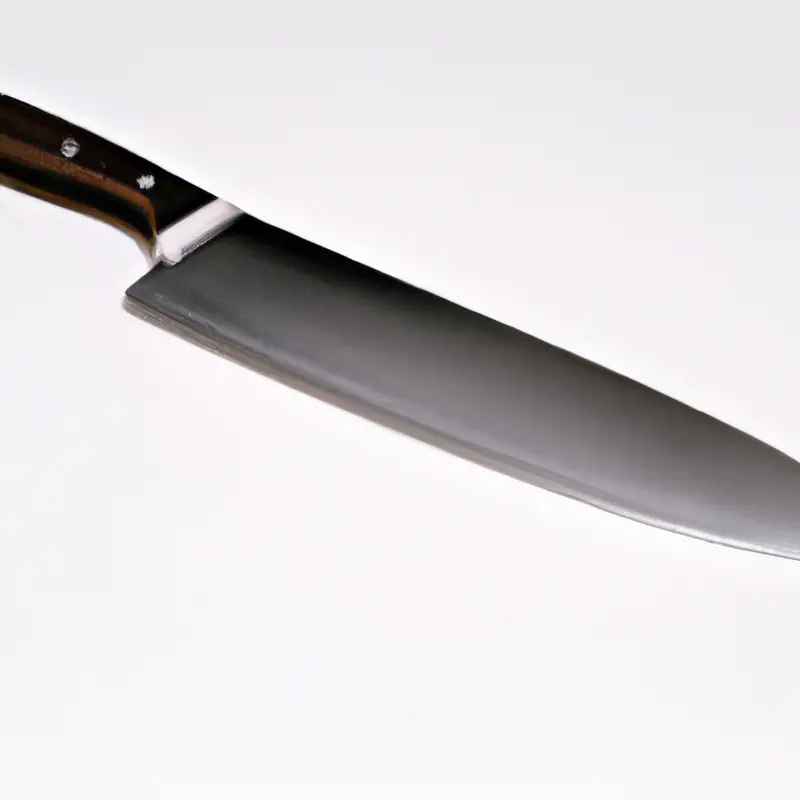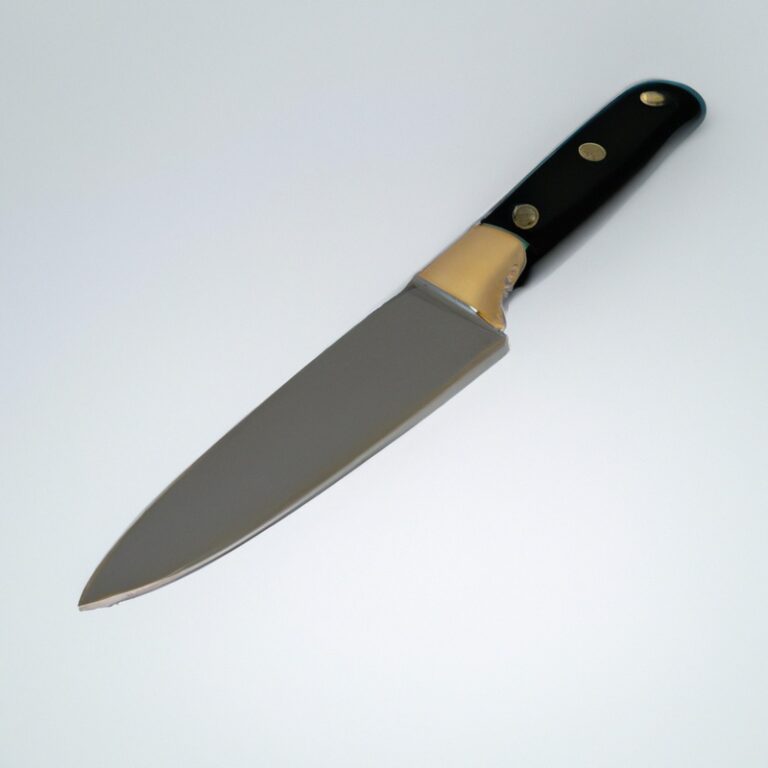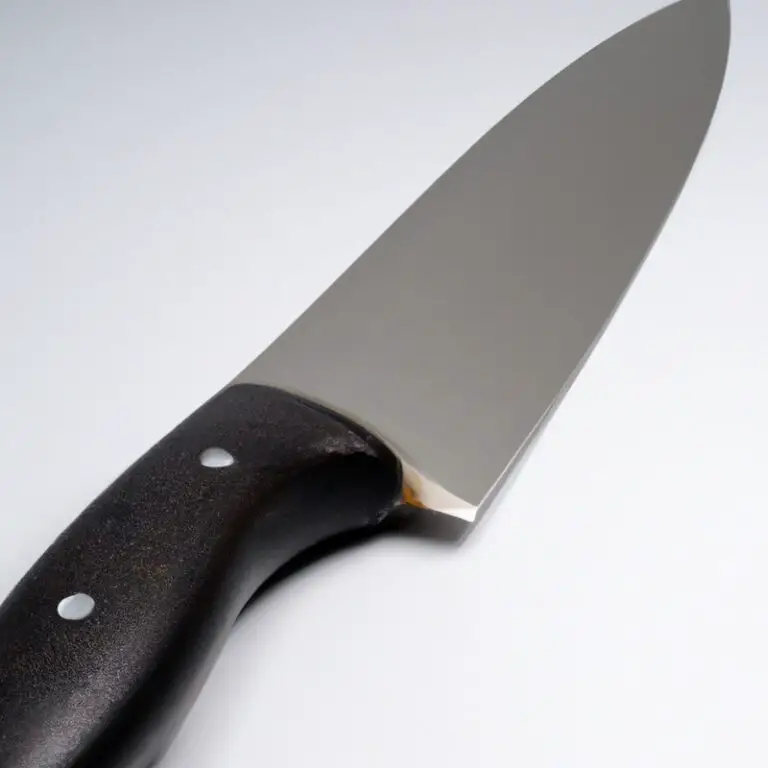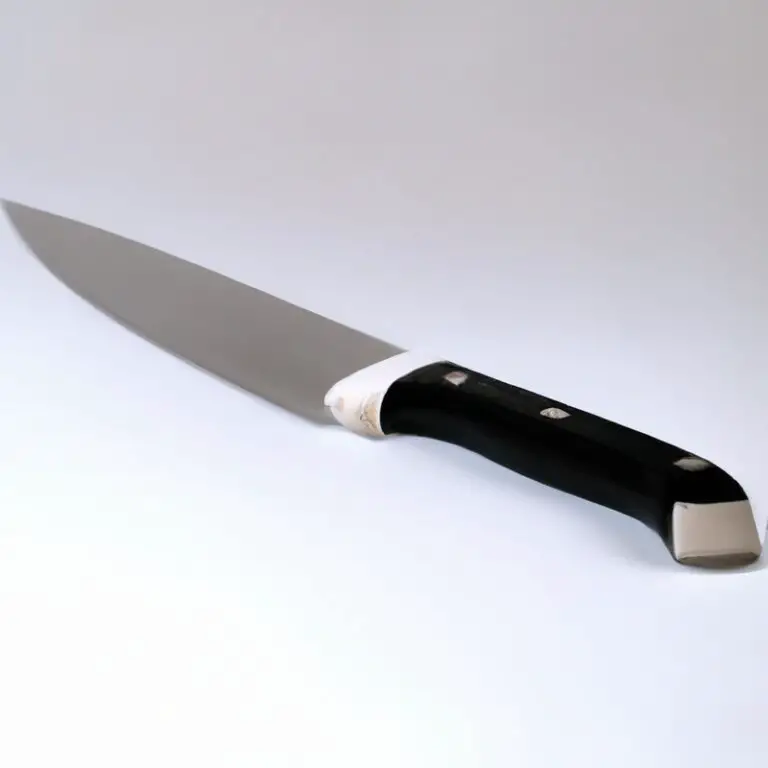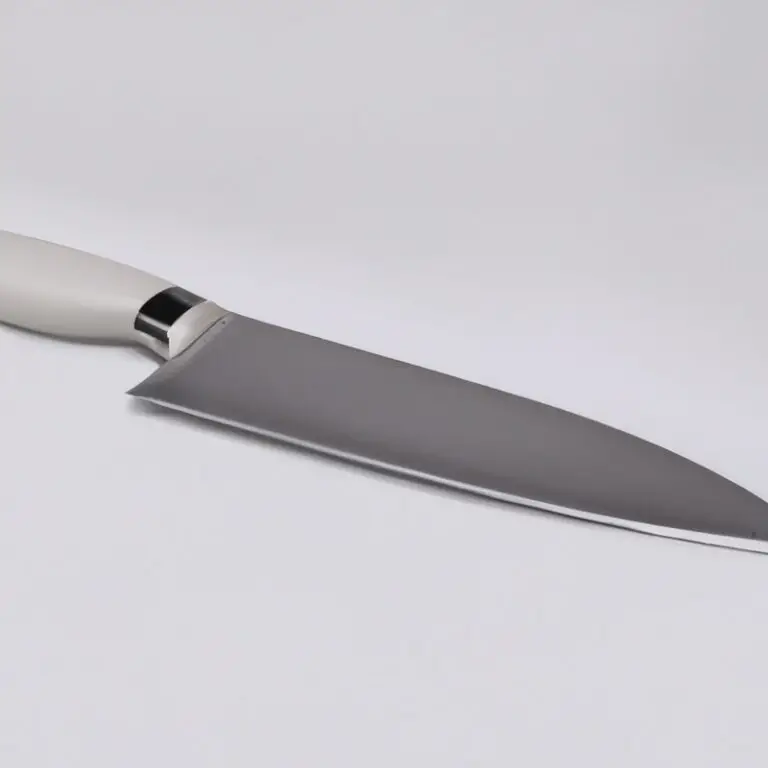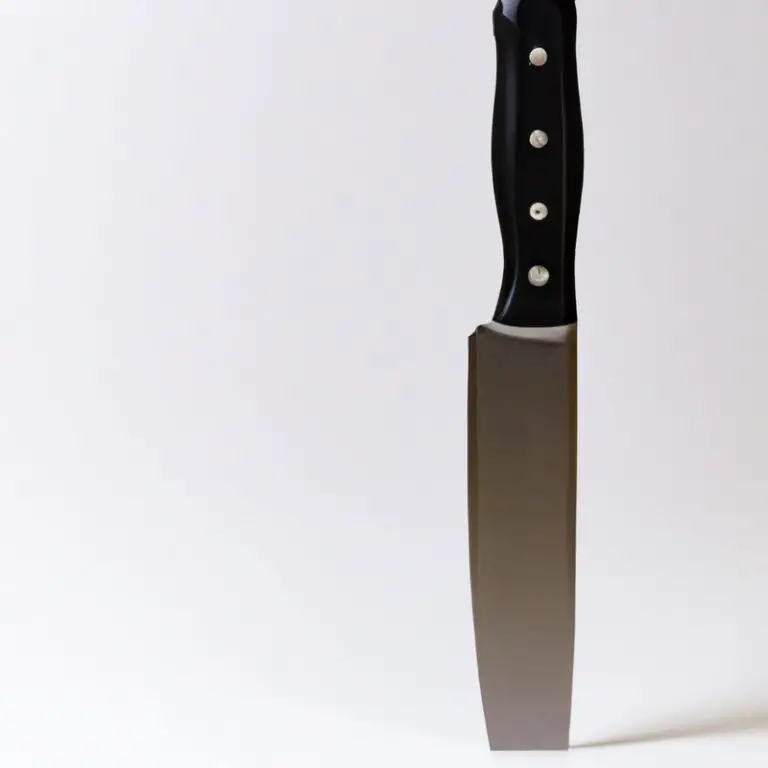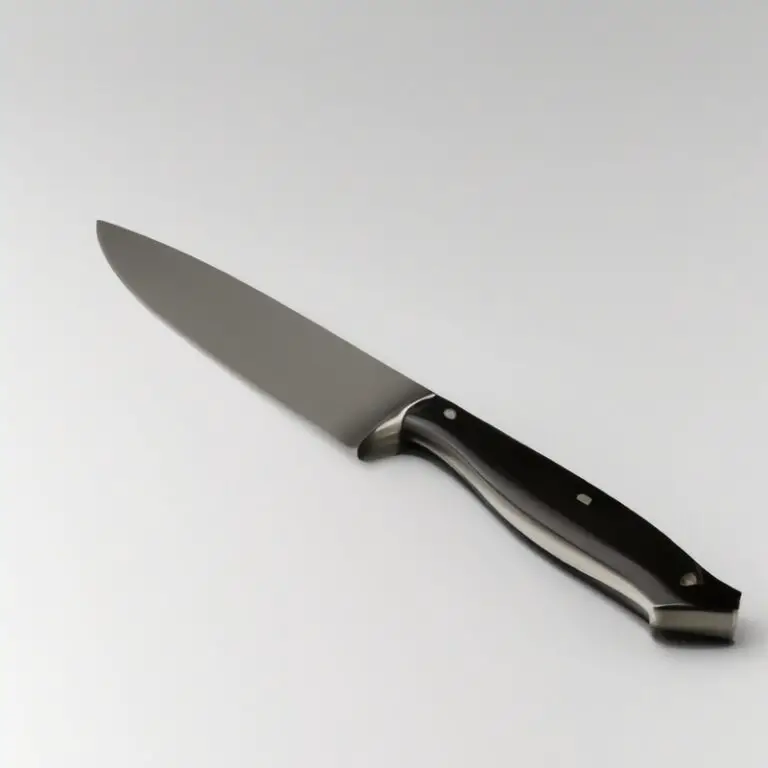How To Protect The Handle Of a Chef Knife From Damage? Keep Your Knife In Top Condition!
Key Takeaways:
- Use a blade guard or a sheath to protect the knife handle when not in use.
- Avoid using abrasive cleaners and harsh chemicals on the handle as they can cause damage and discoloration.
- Clean the handle with a soft damp cloth and mild soap after each use to prevent buildup of oils and dirt.
- Consider investing in a knife handle protector or grip to provide additional support and prevent slips while using the knife.
As a chef, your knife is your trusty sidekick in the kitchen, and the handle is one of its most important components. A damaged handle can impede your cooking, cause discomfort, and negatively impact your performance.
Therefore, it’s crucial to take care of your chef knife handle to ensure its longevity and efficiency.
In this article, I will guide you through the essential steps to protect and maintain your chef knife handle, including identifying common causes of handle damage, choosing the right handle materials, proper cleaning and drying techniques, and best practices for handling and using your knife. So, let’s dive in and start taking care of that chef knife handle.
| Method | Description |
|---|---|
| Use a knife guard | A plastic or wooden sheath that covers the blade and protects the handle during storage. |
| Wrap with a towel or cloth | Wrap the handle with a soft cloth or towel before storing in a knife roll or case. |
| Store separately | Store the knife with the handle facing up, and away from other kitchen tools to avoid damage. |
| Use anti-slip mats | Place a non-slip mat or grip pad underneath the knife block or in the cutlery drawer to prevent knives from moving around and coming into contact with other objects. |
| Clean and dry regularly | Wash the handle with mild soap and water, and thoroughly dry before storing to prevent moisture damage. |
Understanding the importance of handle maintenance for a chef knife
Proper maintenance of your chef knife handle is essential to ensure its longevity and efficient usage. Neglecting its upkeep can lead to handle damage, which can be hazardous during food preparation.
Regularly cleaning your chef knife handle with mild soap and warm water and drying it thoroughly prevents corrosion, splits, and splinters.
Choosing a durable, non-porous, and water-resistant handle material, such as stainless steel, thermoplastic elastomer, or laminated woods, reduces the likelihood of damage. Proper storage using a knife block, magnet, or sheath helps protect the handle from impact, moisture, and temperature changes.
Addressing minor handle damage immediately, such as sanding rough spots, fills cracks, or re-seating the tang, avoids further complications.
Scheduling professional handle repair for significant damage, such as broken tangs or bolts, prevents injury and prolongs the knife’s lifespan. Practicing safe handling, such as gripping the handle firmly and avoiding twisting or bending the blade, reduces wear and tear.
In conclusion, handle maintenance is a critical aspect of caring for your chef knife and ensuring a hygienic and safe cooking experience.
Identifying common causes of handle damage in chef knives
Identifying common causes of handle damage in chef knives is crucial to maintaining their longevity. The repetitive actions of chopping and slicing, exposure to moisture, and improper storage can all lead to handle damage.
It’s important to avoid placing excessive pressure on the handle, as it can cause it to become loose or even break.
Long-term exposure to moisture can lead to swelling, warping, and discoloration of the handle. Also, if chefs store their knives in a cluttered drawer or without proper protection, the handles can get scratched, dinged, and damaged.
Avoiding these common causes can help extend the life of a chef knife’s handle.
Choosing the right materials for your chef knife handle to prevent damage
Choosing the right materials for your chef knife handle is crucial in preventing damage. Materials like hardwood, resin, and micarta are popular for their durability and resistance to moisture.
Hardwood handles like walnut, cherry, and maple are aesthetically pleasing and offer a comfortable grip.
Resin, on the other hand, is waterproof, heat resistant, and easy to clean. Micarta is a composite of fabrics and resin that provides a strong and textured grip.
While stainless steel and plastic handles exist, they are not recommended for their poor grip and suboptimal performance.
Ultimately, select a handle material that provides durability, functionality, and comfort to prolong the life of your chef knife handle.
Proper cleaning and drying techniques to maintain the integrity of your chef knife handle
To maintain the integrity of your chef knife handle, it is important to clean and dry it properly after each use. Avoid using abrasive cleaners or scouring pads that can scratch or damage the handle material.
Instead, use mild soap and warm water to gently clean the handle.
Dry it thoroughly with a soft cloth to prevent moisture from seeping into the handle and causing damage over time. It is also important to store your chef knife in a proper location where it can remain dry and undisturbed.
Follow these simple cleaning and drying techniques to ensure that your chef knife handle remains in good condition for years to come.
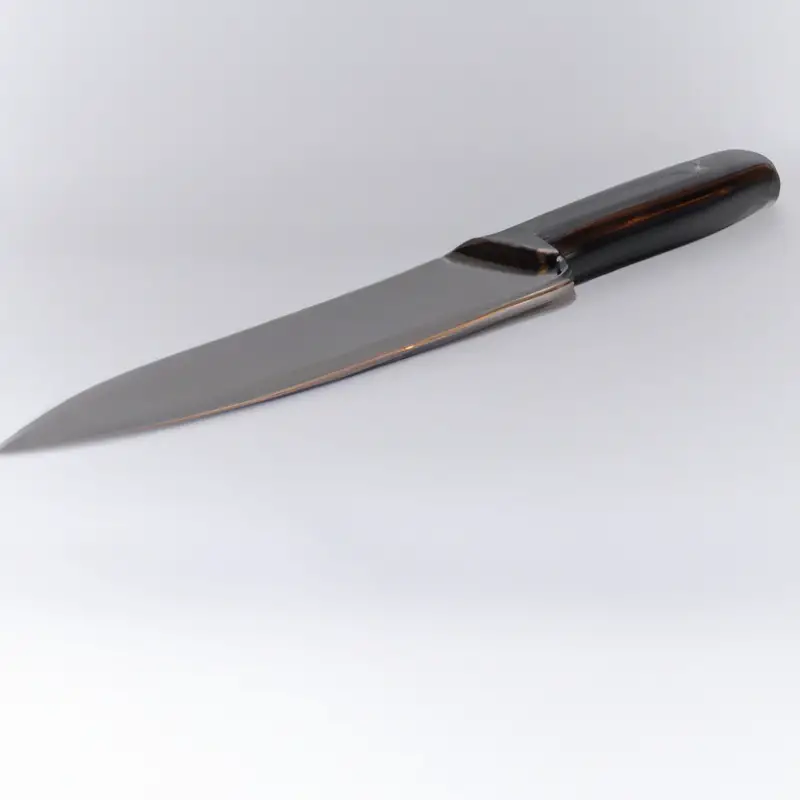
Protective measures to prevent handle damage during use and storage
To prevent handle damage during use and storage, there are several protective measures that you can implement. Firstly, always use a cutting board to protect the handle from hitting hard surfaces.
Avoid using the chef knife on bones or any other hard materials as it can cause damage to the handle.
Secondly, ensure that you clean and dry your knife after each use. Moisture can cause the handle to swell, crack and even develop mold.
It’s important to use a clean and dry cloth to remove water from the handle.
Place the knife in a knife block or sheath to protect the handle from dust, moisture, and direct sunlight. Thirdly, consider investing in a protective knife sleeve or guard.
This will prevent blade-to-blade contact and keep the handle protected during storage or transportation.
Additionally, if you’re transporting your chef knife, consider using a sheath or knife roll to prevent the knife from moving around in your bag. Finally, make sure to store your chef knife in a safe and secure place.
Keep the knife out of reach of children, pets, and other household items that could cause damage to the handle.
A good storage option is a knife block or magnetic knife holder that keeps the knife safely in place and away from other items. By following these protective measures, you can prevent handle damage during use and storage, and extend the life of your chef knife handle.
How to address minor handle damage and prevent it from worsening
Minor handle damage on a chef knife can be fixed easily with some simple steps. If you notice that your handle has small cracks or chips, it’s best to address it as soon as possible to prevent it from worsening.
Firstly, clean the affected area with a damp cloth and dry it thoroughly.
Then, apply a small amount of super glue to fill in any cracks or gaps. Hold the handle tightly together for a few minutes until the glue sets.
Sand down any excess glue with fine-grit sandpaper, then apply a protective wax or oil finish to the handle.
To prevent further damage to the handle, avoid exposing it to extreme temperatures, moisture, or harsh chemicals. Always hand wash your chef knife and dry it immediately after use.
When storing your knife, use a blade guard or cover to protect the blade and handle.
By addressing minor handle damage promptly and taking preventative measures, you can extend the lifespan of your chef knife handle and maintain its integrity.
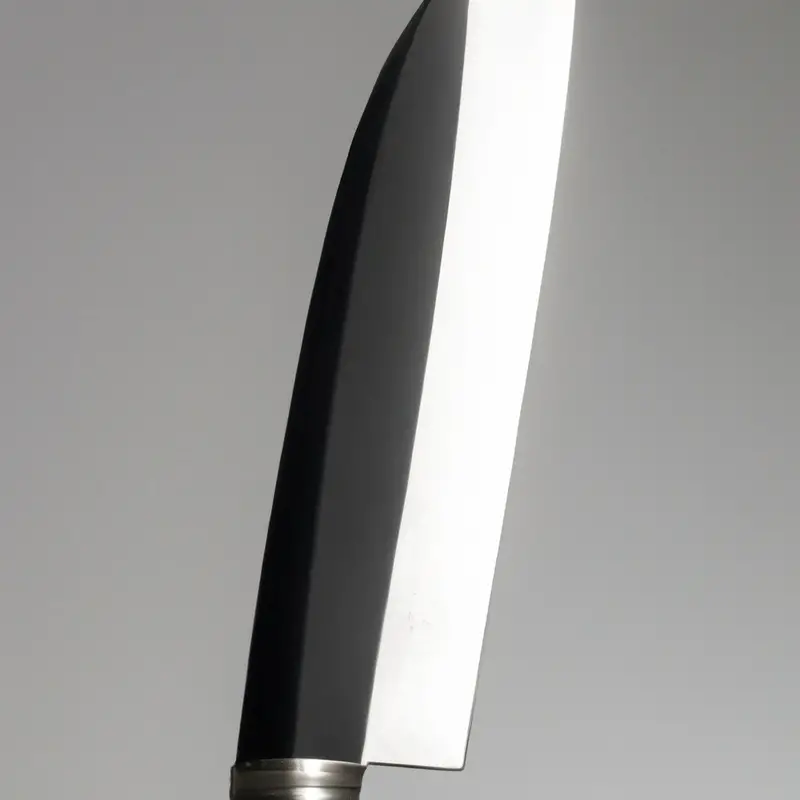
When to seek professional handle repair for your chef knife
If your chef knife’s handle is severely damaged, it is best to seek professional handle repair as soon as possible. Signs of severe handle damage include cracks, chips or deep scratches in the handle material, and looseness between the handle and the blade.
Attempting to fix severe handle damage on your own can lead to further damage or even injury.
Remember that a damaged handle can compromise the safety and functionality of your chef knife, and it is always better to err on the side of caution. When choosing a professional for handle repair, make sure to research and choose a reputable and experienced service provider to ensure quality repairs that will extend the life of your knife.
Ensuring proper storage and transportation to minimize handle damage
Proper storage and transportation of a chef knife is crucial to prevent handle damage. Here are some tips to minimize handle damage:
- Invest in a knife sheath or blade cover to protect the blade and handle during storage and transportation.
- Store the chef knife in a designated knife block or drawer to prevent it from shifting or falling.
- Keep the knife away from heat and moisture to avoid warping or rotting of the handle material.
- Do not keep the knife with other kitchen tools that may scratch or dent the handle.
- When transporting the knife, wrap it separately in a cloth or towel and keep it secured in a knife roll or case.
Proper storage and transportation are essential to prevent handle damage and maintain the integrity and durability of your chef knife.
Best practices for handling and using your chef knife to prevent handle damage
Best practices for handling and using your chef knife to prevent handle damage are:
- Grip the handle firmly, but not too tightly, to avoid putting excess pressure on it.
- Use a cutting board made of soft materials like wood or plastic to prevent the handle from hitting hard surfaces.
- Avoid using your chef knife to cut frozen foods or bones, which can damage the handle.
- Wash and dry your knife immediately after use to prevent moisture damage to the handle.
- Keep your knife in a knife block or sheath when not in use to avoid contact with other metal objects that can cause scratches.
By following these best practices, you can prevent handle damage to your chef knife and ensure its longevity.
The role of regular maintenance in extending the life of your chef knife handle
Regular maintenance plays a crucial role in extending the life of your chef knife handle. It involves simple tasks like cleaning and oiling the handle routinely.
Regular maintenance helps prevent buildup of dirt and grime, which can erode the handle, causing cracks and splits over time.
Proper maintenance also helps prevent rust and corrosion, which can further weaken the handle. Neglecting your handle can lead to the development of potential safety hazards while using the knife.
Therefore, it’s essential to practice proper maintenance of your chef knife handle to prolong its lifespan.
Final Verdict
Protecting the handle of your chef knife from damage is essential to maintaining its longevity and performance. By understanding the importance of handle maintenance, identifying common causes of damage, choosing the right materials, using proper cleaning and drying techniques, taking protective measures, addressing minor damage promptly, and seeking professional repair when necessary, you can ensure that your knife’s handle stays in optimal condition.
By implementing best practices for handling and using your chef knife, such as proper storage and transportation, you can help minimize the risk of wear and tear.
Remember, regular maintenance is key to extending the life of your chef knife handle. By following these guidelines, you can keep your knife in top shape and rely on it as a trustworthy tool in your culinary endeavors.

